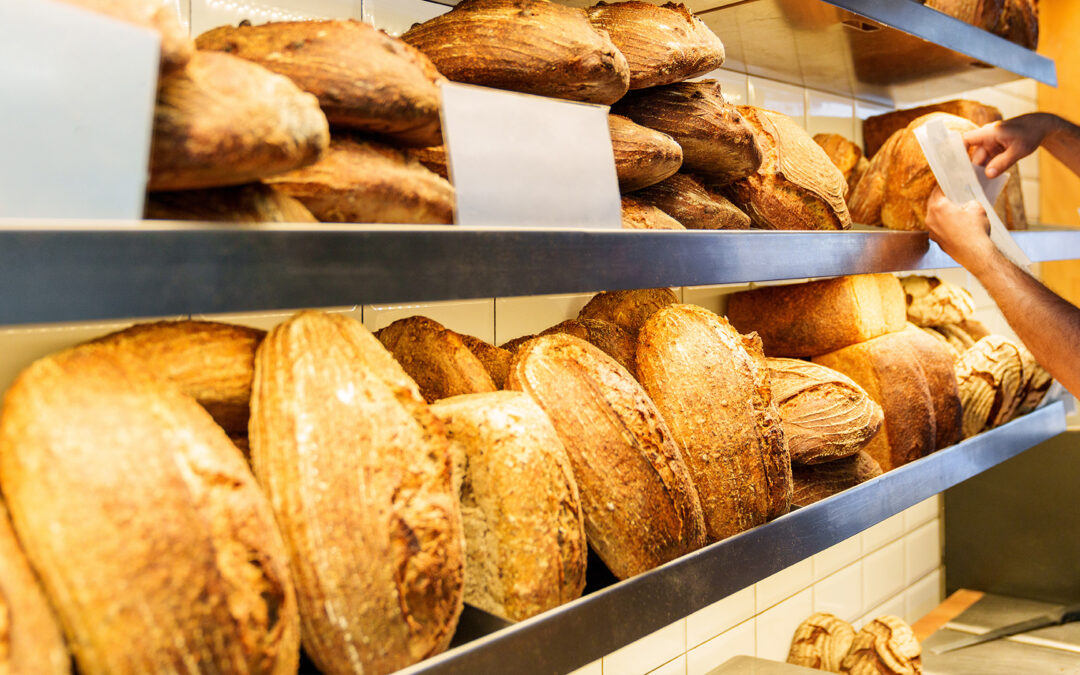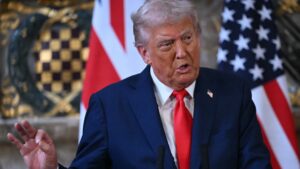As I’m writing this, I’m sitting in a coffee shop in my small Blue-Ridge-Mountains town. It’s cold outside, instrumental Christmas music is playing. There is a gray-haired lady to my right telling a very animated story, and I’m enjoying a hot cup of English Breakfast. (I’m a tea drinker.) Now, this coffee shop happens to also be a bakery with the most delicious savory brioches you’ve ever eaten. One of those would make the whole experience perfect, but I’m not going to get one right now.
Why am I saying no to that delicious sandwich? Because I’ve mastered the subtle art of trade-offs. Buying that brioche this afternoon would require the use of two resources. The first is the precious few treats I can eat before I start to lose ground on my health goals. The second is money.
The truth is, it’s only the 4th of the month and my personal fun money is already halfway gone. (Maybe I haven’t mastered the art of trade-offs… yet.) So I’m saying no to the brioche today. And, I don’t feel bad about that at all, because I’ve got goals! The bulk of my personal fun money is going toward a trip with some friends I’m planning in a few months. Saving for the trip is more important to me than the brioche, at least in this very moment.
This is an example of a trade-off, and whether we know it or not, we make trade-offs constantly. Your time, your health, your energy, your attention, your money—these are all finite resources in everyone’s lives. When we spend any of them on one thing, it means we can’t spend them on something else. Whenever you allocate finite resources, you have to make choices, whether you are conscious of those choices or not.
This is where the YNAB Method really shines. It’s four simple rules that help you lovingly acknowledge that trade-offs are an everyday part of life. By turning these rules into habits, you’ll suddenly become aware of the trade-offs you make with your money every day. And once you’re aware, you can control them and ultimately build the life you want.
What trade-offs will you happily make this year? Our Ultimate Get Started Guide can help you set up a priorities-based spending plan.
Embracing Opportunity Cost
Economists have been talking about trade-offs since the field of economics became a thing. But they call it opportunity cost, the most exciting concept in economics. Seriously, it is such a useful idea, because understanding opportunity cost is the key to grasping the true value of, well, anything.
Opportunity cost says that the true cost of buying something is not the dollar amount, it’s losing the opportunity to spend that money on something else. When you start to think in terms of opportunity cost rather than cost in dollars and cents, it changes everything!
Let’s take the classic dubious personal finance example. Should I buy Starbucks this morning, or should I invest that $6.43 in a mutual fund? If I invest, the conventional wisdom is that I’ll have roughly a bajillion dollars in 30 years. If I buy the coffee, I’ll have a nice comforting drink right now. The opportunity cost is clear. Investing will take away the opportunity to have coffee. Buying the coffee will take away the opportunity to become a bajillionaire when I’m old.
Okay, this is obviously a tongue-in-cheek example, but it gets the point across. Any time you spend your money, you lose the opportunity to spend it on something else. The cost is the lost opportunity. The cost is the trade-off.
Let’s see how this comes into play when you’re flexing your YNAB Method muscles.
When you start to think in terms of opportunity cost rather than cost in dollars and cents, it changes everything!
Rule One: Trade-offs When You Give Every Dollar a Job
Have you ever been expecting a windfall and spent that money in your head three or four times before it even arrived? (Or worse, maybe you have actually spent it multiple times on credit before you got it?) When people tell me what life was like before YNAB, this scenario comes up all the time.
If you don’t allocate your finite resources intentionally, it can be easy to lose sight of the trade-offs you’re making. Rule One says Give Every Dollar a Job—and making it a habit eliminates the risk of spending more money than you have right now. Every time you get paid, you’re going to allocate every single one of those dollars to a priority-based category until you hit zero! When you do, you’ll run into immediate trade-offs, because when you give a dollar one purpose, you can’t give it another one.
Rule One is all about embracing trade-offs! The beauty is you decide what trade-offs to make on paper before you actually spend. It’s the very first step in becoming aware of opportunity cost. Once you embrace the scarcity of your money, you can make sure it goes toward the things you value the most.
Rule Two: Trade-offs When You Embrace Your True Expenses
With Rule Two, you make the trade-off of taking on a little pain now in order to avoid a lot of pain later. Embracing Your True Expenses means setting money aside every month for large, non-monthly expenses like car repairs, yearly subscriptions, medical bills, and many more! We’ve all wished to somehow turn back time and recover the money we spent on something trivial so we could redirect it to life’s inevitable “surprise” expenses.
Before YNAB, I had that feeling every time my car broke down. “Where is the money going to come from!?” That was a cry for clarity. I didn’t know what trade-offs I would have to make in order to fix the car, because the truth is I had already made them. That money I needed for my most urgent priority had gone with the wind two, three, even twelve months ago!
Rule Two helps you capture some of those trade-offs. You ask yourself, “Do I want to buy that video game today, or do I want to prepare for the inevitable financial emergency coming six months down the road?” You give up some of your discretionary income now for a more peaceful, lower-stress life later.
Rule Three: Trade-offs When You Roll With the Punches
At YNAB, we believe in the importance of having a flexible plan. That’s why Rule Three is my personal favorite rule. It acknowledges that you can’t see everything coming. When you overspend or when your priorities change, it’s okay to change your plan. Period.
A lot of money methods out there really only involve tracking your spending (farewell, Mint!). You make trade-offs with your money in ignorance every day, and then at the end of the month you get a pretty pie chart showing that you massively overspent on dining out … again! By that point, there’s nothing you can do about it. The trade-off decisions have already been made, and you don’t even have any way of parsing out what they were.
Do you see how powerful that is!? You can decide what trade-offs to make instead of wondering what you gave up at the end of the month
With YNAB, and with Rule Three, you have all the information you need for complete awareness of the true opportunity cost every time you spend money, especially if you check your categories before you spend. If you don’t have enough set aside for the spending, you can go into trade-off mode. You can look through your other categories and decide where to take the money from. Do you see how powerful that is!? You can decide what trade-offs to make instead of wondering what you gave up at the end of the month. Either way, you’re always making trade-offs with money. But if you’re following the YNAB Method, you make those trade-offs with your eyes wide open.
Rule Four: Trade-offs of Aging Your Money
Rule Four is also all about trade-offs. The goal of Rule Four is to build a buffer between you and life. We want you to live on last month’s income, so when you get a paycheck, you don’t even need it for at least thirty days.
Think of how much more peace that would give you. How much more time would you have to make financial decisions? How would your decisions change?
Similar to Rule Two, Rule Four asks you to make a trade-off today for a powerful reward in the future. Hold back some of your income over the next several months so you can build a buffer between you and life. The result is you’ll have a lot more security, but you’ll also have more space between planning and actually spending. Space to weigh your trade-offs before you make them.
Embracing Trade-offs for a Fuller Life
All of this matters because your money is you. It’s a product of your time, your effort, your YOUness. That means if you have a clearer direction for your money, you have a clearer direction for your life, too.
Remember, we make trade-offs every single day, all day with all our finite resources. YNAB can help you make those trade-offs intentionally and make sure more of your money goes toward actualizing opportunities that make you more of who you are—and more of who you want to become.
Where does your money go? Wherever you tell it to. See what it’s like to be in total control of your finances with YNAB’s 34-day free trial.









